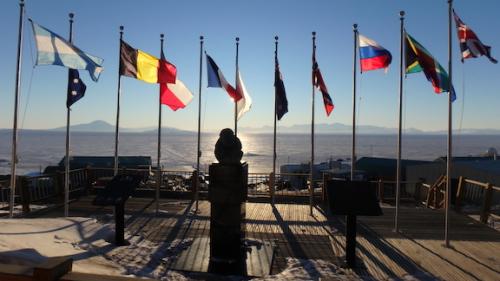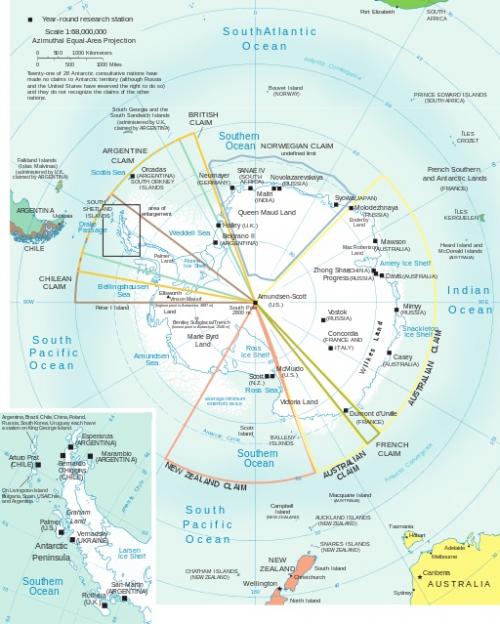On October 24th, the date of the last sunset, at a ceremony on the viewing deck of McMurdo Station's administrative building, representatives of the National Science Foundation hoisted flags of twelve nations on twelve separate flagpoles. Significantly, these twelve nations - Argentina, Australia, Chile, France, New Zealand, Norway, the United Kingdom, the United States, the Soviet Union, Japan, South Africa, and Belgium - were the first to sign the Antarctic Treaty, an international agreement through which an entire continent is held in trust in the name of future generations for the peaceful pursuit of science. This agreement is the first time this had happened in human history. Since the Treaty's signing in 1959, the list of nations that are party to it has expanded to 53 and several important additions have been made.

Most relevant to our daily lives at McMurdo is the 1991 Protocol on Environmental Protection to the Antarctic Treaty, which sets aside the entire continent - all the land south of 60 degrees south latitude - as a "natural reserve devoted to peace and science." Among the articles put forth in the Environment Protocol, strict rules were established on human activities. These are the rules we live under at McMurdo, governing everything from the release of pollutants into the environment (even tiny spills are immediately cleaned up), removal of items from the continent (all of our waste is shipped back to the US), and the introduction of foreign species (the last sled dog team left the continent in 1994).

The Environment Protocol, ratified for 50 years, also protected all wildlife, mandating environmental impact assessments for all planned human activities and allowing for the identification and implementation of Antarctic Specially Protected Areas (ASPAs). These preserves add a higher level of protection to significant biological (e. g., penguin rookeries), geological (e.g., volcanoes and subglacial lakes), and historical (e.g., early explorers' huts) areas, and prevent entry from human beings except those with well defined and highly vetted reasons for being there. The Antarctic Treaty and its Environment Protocol provides some of the greatest protection offered to any landscape on Earth, but those protections have ignored the rich biodiversity of the surrounding Southern Ocean. Until today.



Comments